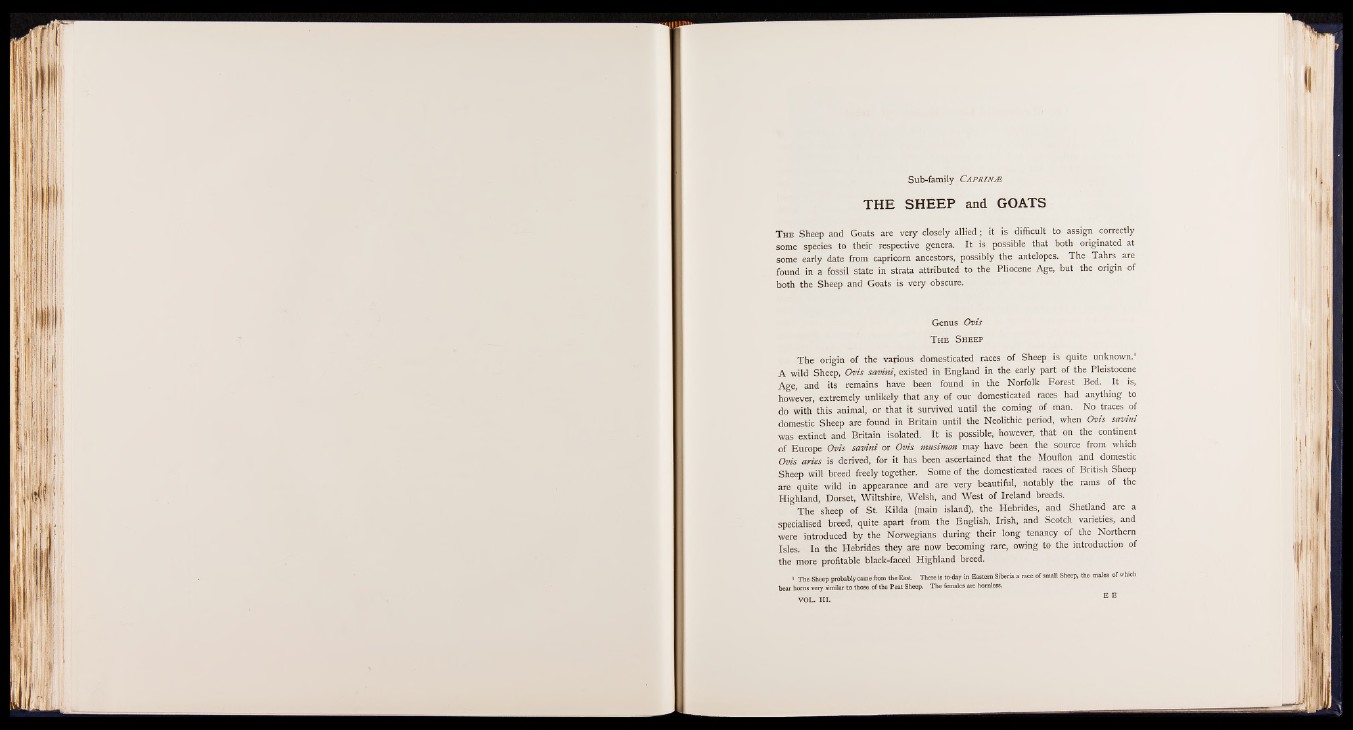
Sub-family CAPRINJ2
THE SHEEP and GOATS
T he Sheep and Goats are very closely allied; it is difficult to assign correctly
some species to their respective genera. It is possible that both originated at
some early date from capricorn ancestors, possibly the antelopes. The Tahrs are
found in a fossil state in strata attributed to the Pliocene Age, but the origin of
both the Sheep and Goats is very obscure.
Genus Ovis
T he S heep
The origin of the various domesticated races of Sheep is quite unknown.1
A wild Sheep, Ovis savini, existed in England in the early part of the Pleistocene
Age, and its remains have been found in the Norfolk Forest Bed. It is,
however, extremely unlikely that any of our domesticated races had anything to
do with this animal, or that it survived until the coming of man. No traces of
domestic Sheep are found in Britain until the Neolithic period, when Ovis savini
was extinct and Britain isolated. It is possible, however, that on the continent
of Europe Ovis savini or Ovis musimon may have been the source from which
Ovis aries is derived, for it has been ascertained that the Mouflon and domestic
Sheep will breed freely together. Some of the domesticated races of British Sheep
are quite wild in appearance and are very beautiful, notably the rams of the
Highland, Dorset, Wiltshire, Welsh, and West of Ireland breeds.
The sheep of St. Kilda (main island), the Hebrides, and Shetland are a
specialised breed, quite apart from the English, Irish, and Scotch varieties, and
were introduced by the Norwegians during their long tenancy of the Northern
Isles, In the Hebrides they are now becoming rare, owing to the introduction of
the more profitable black-faced Highland breed.
» The Sheep probably came from the East There is to-day in Eastern Siberia a race of small Sheep, the males of which
bear horns very similar to those of the Peat Sheep. The females are hornless.
VOL. III.
E E